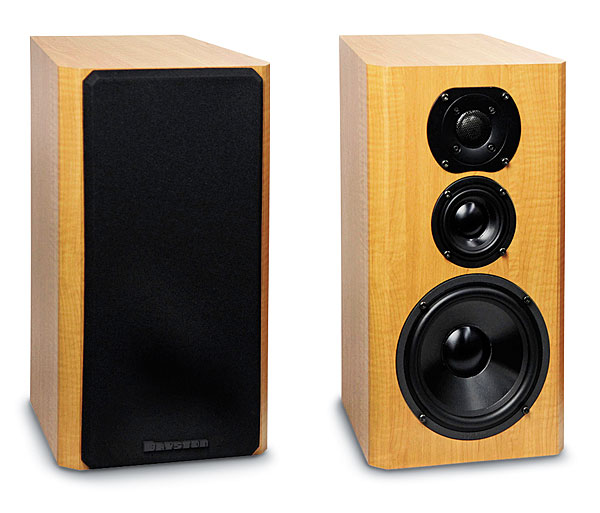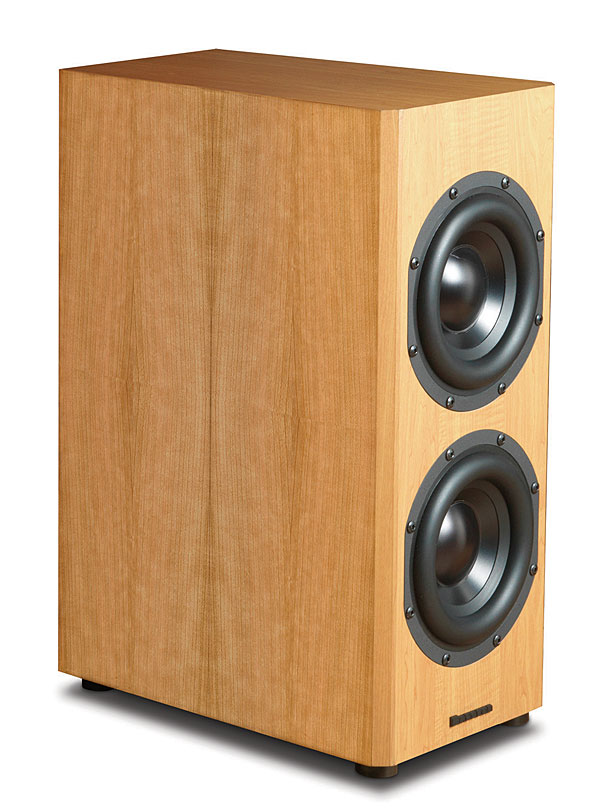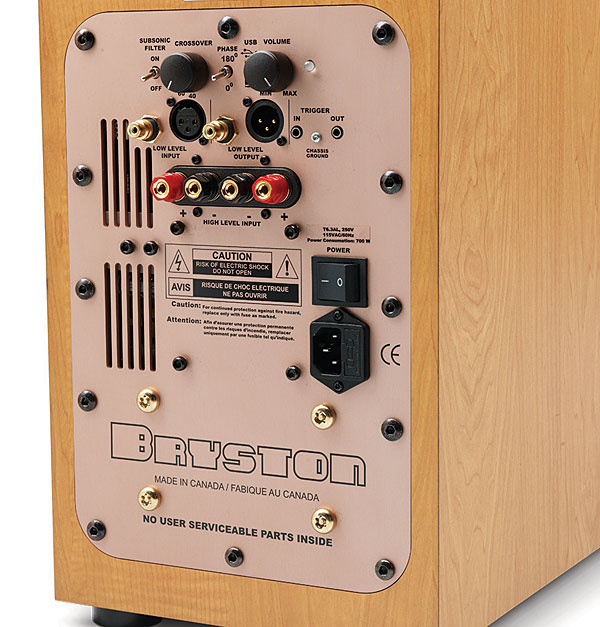Bryston Mini T Speaker System

AT A GLANCE
Plus
Outstanding sonics and dynamic ability
Impressive bass extension from Mini-T alone
Made in Canada, not
overseas
Minus
Requires substantial
amplifier power for best performance
Classic boxy designs won’t thrill everyone
THE VERDICT
They’re big, boxy, and expensive, but these speakers are world-class performers, top to bottom.
Bryston’s new Mini T loudspeakers spoke to me early, even before I’d fully wrestled them out of their imposing, oversized packaging. And what they said was, “We were designed by guys who don’t give a hamster’s hindquarters for new-age cosmetics, ‘breakthrough’ transducers, or 21st-century styling: We’re old school!”
For the record, Bryston Ltd.—based in the small Canadian city of Peterborough, an hour or so east of Toronto—has for decades produced some of the world’s preeminent power amplifiers (also preamps, surround processors, and even the odd integrated amp), impeccable performers built to a standard of brick-house quality seldom bettered, and warrantied accordingly. If you wanted vast reserves of current, bulletproof design, road-ready ruggedness, and genuine craftsmanship, Bryston fit the bill.
Now, for reasons best known to themselves, the folks at Bryston have elected to join the circus that is the high-end loudspeaker business, with a tone-matched family of 10 models, including towers, centers, and powered subwoofers. The system under review here is formed around the Mini T, a big, boxy, heavy, and utterly conventional three-way from Bryston’s “Compact” group. Compact perhaps, but the Mini T nevertheless stretches the definition of “bookshelf” twanging-taut: Each is some 22.5 inches tall and weighs a substantial 42 pounds. And Bryston’s assigned supporting-cast members for surround (Mini A), center channel (AC1 Mini), and sub (Mini T Subwoofer) are no less imposing.
All four models employ drivers with ceramic-coated aluminum cones and titanium-dome tweeters, with every transducer custom to Bryston. The story goes that development of the T series began with Bryston’s James Tanner approaching his industry colleagues at nearby Axiom Audio to help him build his own personal reference loudspeaker; they were never intended to be sold. From this association grew the Model T tower, which Bryston was convinced to begin selling. He and Axiom then expanded the line to include additional models. They’re manufactured in Canada by Axiom to Bryston’s standards; even the A-series models, which are said to be more derivative of existing Axiom designs, are in beefier cabinets with additional cross-bracing, among other changes.

Naturally, they’re all expensive speakers by everyday (though not über-high-end) standards: The full suite reviewed here comes to nearly $9,000. So you don’t select Bryston speakers for slimness, sexiness, or price. (You do get the choice of high-quality vinyl or optional lovely wood veneers, as reflected by the range of pricing shown for each.)
This leaves performance, clearly Bryston’s only ambition in entering the madness of loudspeaker marketing for the first time. (Of course, you’re also paying for made-in-Canada-not-China craftsmanship.) The Mini T is the next smallest in a range that Bryston states has been designed throughout for a classical balance of flat on-axis response and smoothly declining (off-axis) power response. These are goals that are nailed absolutely, if the manufacturer’s supplied curves are to be believed—and considering the source, I certainly believe them.
My setup entailed no particular challenges beyond some heavy lifting: I placed the Mini Ts on my 28-inch stands, to which they happily fit perfectly. The surprisingly heavy AC1 Mini perched on my usual low stand, just below my 52-inch screen’s bottom edge, while the Mini T Subwoofer occupied my usual woofer location just behind and outside of the right-front speaker. The Mini A surrounds, a pair of somewhat smaller 6.5-inch three-way speakers that Bryston selected to complete the suite, went on the high shelves that flank my studio’s listening area. All five main speakers come with heavy, multiway binding posts.
Musical Realism
With everything in place, I forgot about the Brystons for a week of break-in by way of casual everyday playback. When I did settle down to some serious listening, I began as always with the Mini Ts alone, running full-range without subwoofer support. Since these hefty speakers extend quite far into the true bass region, the first order of business was to find the location for the smoothest lows. Not very surprisingly, this turned out to be rather more than 7 feet out into the room; any closer to the wall, bass emphasis tended to be problematic, a phenomenon I’ve noticed before in my room when using stand-mounted speakers with extended low end. (The Mini Ts sounded great directly on the floor, quite near the wall but well in from the corners—thus minimizing the floor-bounce-induced dip—but this was totally impractical for a home theater layout. Maybe in a music-only system with floor-cushion seating…)

With final placement settled, what I encountered was exceptionally neutral, uncolored reproduction, with as complete an absence of discrete response anomalies as I’ve ever heard. The Mini Ts sounded very similar indeed to my everyday Energy Veritas speakers, also a Canadian design but much older. (This shouldn’t be surprising, since virtually all Canadian speaker designers exploit the world-class speaker-measurement and test resources of Canada’s National Resource Council in Ottawa, and Axiom’s own anechoic chamber is modeled after this storied facility.) If anything, the Brystons’ male-vocal midrange was marginally more open and organic (which is saying something) and their top-octave reproduction a couple shades more transparent.

As already mentioned, the Mini Ts go impressively low on their own. I’ve recently gone over to the Dark Side, exploiting some public-domain dubstep tracks for ease in exercising subwoofers and other deep-bass denizens, and the amount of output around 30 hertz (and even a good deal lower) that the “compact” Brystons could hurl into the room was truly astonishing. When they’re deployed as a full-range stereo pair, I’d expect the Mini Ts to be up for almost anything, except the kind of music (like dub!) that absolutely insists on full power from the lowest octave. Even in my 2,800-ish-cubic-foot studio, stereo playback of most full-orchestra music at realistic levels was child’s play to the Mini Ts, which cheerfully absorbed all of my 150-watt power amp’s output with no hint of distress or dynamic compression. Given suitable power—which Bryston can of course supply in spades—they likely could do so even in larger rooms, though any of Bryston’s several larger tower models would doubtless do even better.





























































